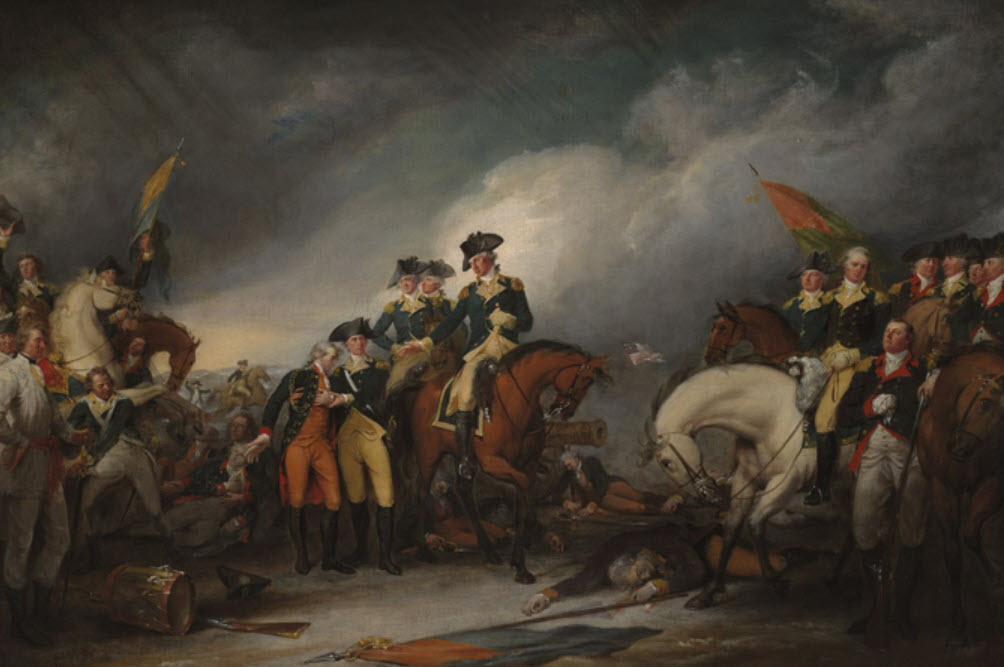Silver Lining
For the most part, and with the exception of the publication of the Declaration of Independence, 1776 had been a brutal year for Patriot morale. The Continental Army, under the command of George Washington, had been more or less routed in and around New York City, suffering tremendous casualties. Morale was low and the ragtag Continental army was forced to retreat through New Jersey to the west side of the Delaware River into Pennsylvania. On the other side of the river, in Trenton, N.J., were three regiments of Hessian soldiers (German soldiers) numbering about 1,400.
A Nine-mile Path of Blood
General Washington planned an attack on the Hessians from three directions to be executed on December 26, 1776, the day after Christmas. As the Continental Army prepared to cross the Delaware River on their way to Trenton, sleet and snow had begun to fall, delaying the crossing. With great effort and difficulty, the army eventually crossed the river in Durham boats, and the horses and artillery were ferried across. Two men fell overboard during the crossing, but both survived. Two other generals who were to assist Washington were delayed by the adverse weather. By 4:00 in the morning, however, the crossing was completed and the Continental Army began the nine mile march toward Trenton. During the march, Washington continually encouraged his troops, many of whom lacked shoes and were bleeding from their feet.
Surprising the Hessians
The first shots of the battle happened about a mile north of Trenton at a Hessian outpost, where the Hessians stationed there began a desperate retreat. Once in Trenton, Washington instructed the escape route to Princeton cut off. Washington's army was soon joined by armies under the command of Generals Nathaniel Greene and John Sullivan. Cannons and artillery were set up at the heads of King and Queen Streets, the two main streets running through the city, which did tremendous damage to the Hessian ranks. Hessian soldiers advancing up the streets were quickly repulsed. Elsewhere in the city, Hessian forces were being overrun. Eventually, the majority of Hessian forces would become surrounded by American forces in an orchard. They were forced to surrender. Others surrendered when their escape routes had been cut off.
 |
Capture of the Hessians at Trenton on December 26, 1776 by John Trumbull |
A Key Victory for Patriot Morale
In the battle, only two American soldiers were killed and five were injured, though many more suffered from hypothermia and disease. The Hessians suffered 83 casualties, 22 of which were fatalities. 896 Hessians were captured, though several hundred did manage to escape. All four Hessian colonels, however, were killed. Although the battle was not important tactically, it inspired the American war effort and raised the morale of the army, which seemed to be threatened with dissolution.